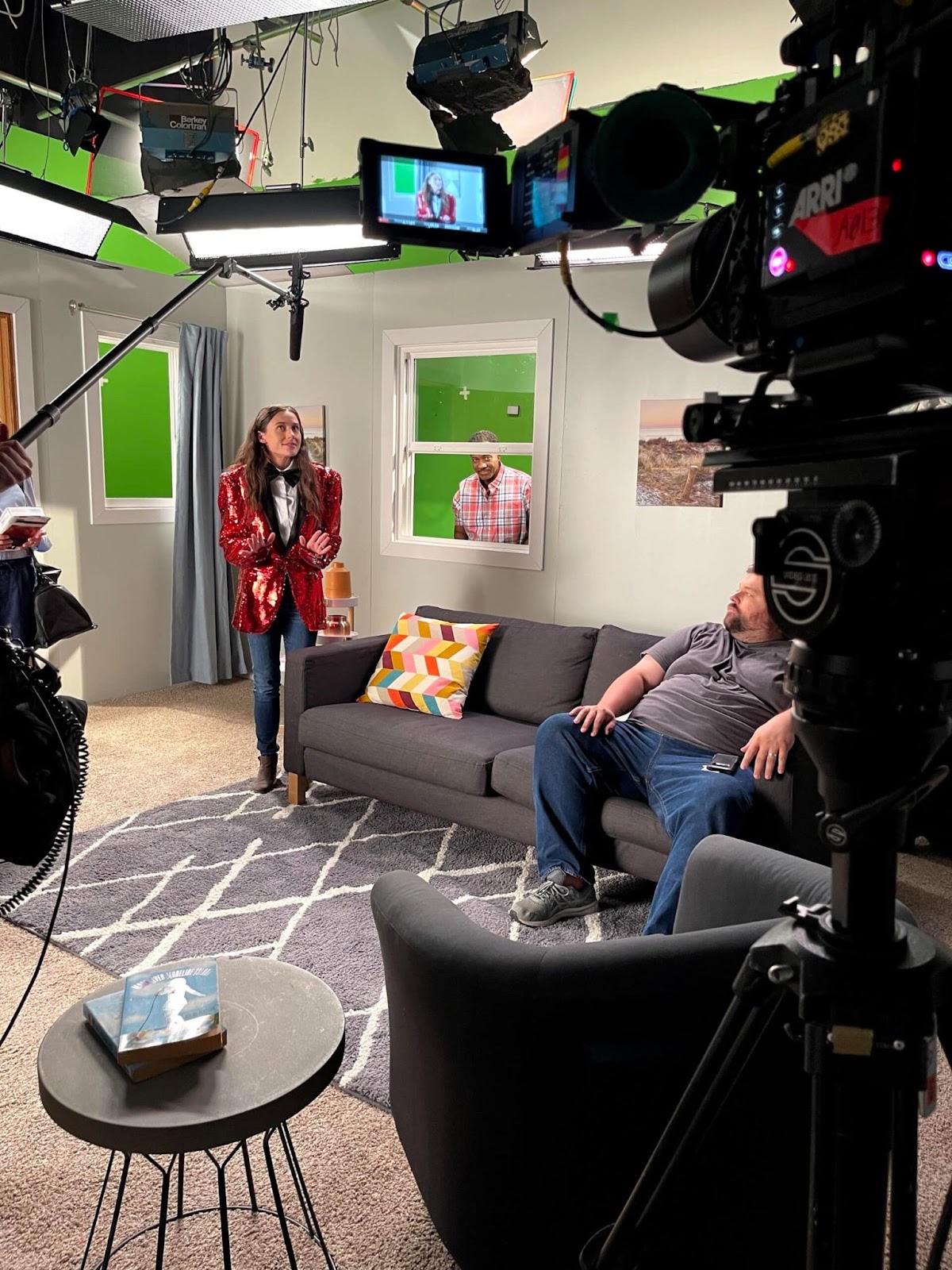How to Repurpose Content into Video
How to Repurpose Content into Video
Creating fresh content regularly can be time-consuming and resource-intensive. But what if you could repurpose content into video and extend the reach of your existing assets? By turning blog posts into videos, brands can engage new audiences, boost SEO rankings, and enhance their video marketing strategy without starting from scratch.
In this guide, we’ll explore the best ways to convert written content into engaging videos, why content repurposing is essential for digital marketing, and how to maximize results with minimal effort.
What is Content Repurposing?
Content repurposing is the process of taking existing content and transforming it into new formats to reach different audiences and platforms. This could involve turning blog posts into YouTube videos, social media posts, infographics, or even podcasts. The aim is to breathe new life into your existing content, making it more engaging and extending its reach across various social media platforms. By repurposing content, you can cater to different audience preferences and consumption habits, ensuring that your message resonates widely.
Benefits of Repurposing Content
Repurposing content offers a multitude of benefits that can significantly enhance your content strategy:
- Saves Time and Effort: Creating high-quality content from scratch can be time-consuming. Repurposing allows you to leverage existing content, saving valuable time and resources.
- Increases Reach and Impact: By presenting your content in various formats, you can reach a broader audience. Different people consume content differently, and repurposing ensures you cater to these diverse preferences.
- Provides Value to Different Audiences: Repurposing allows you to tailor your content to different target audiences, making it more relevant and engaging for each group.
- Boosts SEO: Multiple pieces of content centered around similar keywords can improve your search engine rankings, driving more organic traffic to your site.
- Scales Content Amount and Audience Reach: Repurposing enables you to produce more content without the need for constant new ideas, thus scaling your content output and audience reach.
- Drives Further Engagement and Builds Brand Loyalty: Consistently providing valuable content in various formats keeps your audience engaged and fosters brand loyalty.
Why Repurpose Blog Content into Video?
Repurposing long form blog posts into video is one of the most effective ways to maximize content visibility and boost audience engagement. Not everyone prefers reading long-form articles, but video content is easier to consume and share. Studies show that video content gets 1,200% more shares than text and images combined.
Additionally, video marketing strategies drive better results on platforms like YouTube, Instagram, and TikTok, while search engines prioritize video content in rankings. Websites with embedded videos tend to have higher dwell times, reducing bounce rates and improving SEO performance.
Beyond search engine benefits, video also caters to diverse audience preferences. Some users prefer watching instead of reading, making video an essential tool for accessibility and engagement. By repurposing blog posts for YouTube, social media, and website content, brands can expand their reach, attract more traffic, and reinforce key messages across multiple platforms. Condensing information from multiple posts can create centralized, referenceable content, enhancing the depth and freshness of the material.
Step-by-Step Guide to Turning Blog Posts into Videos
1. Identify High-Performing Content
Start by selecting blog posts that have performed well in terms of traffic, engagement, or social shares. Content that answers common questions, provides solutions, or covers evergreen topics is ideal for video content strategy.
Look at Google Analytics, social media insights, and website heatmaps to determine which articles have high engagement rates. Blog posts with long dwell times, high share counts, or strong organic traffic make excellent candidates for video content repurposing.
2. Extract Key Points and Structure a Script
Not all written content translates directly into video, so summarize key takeaways and structure a compelling video script. Focus on main ideas, actionable tips, and engaging storytelling to keep viewers hooked.
A well-structured script ensures that the video flows naturally, preventing unnecessary fluff. Instead of reading a blog post verbatim, convert bullet points into engaging narratives and use storytelling elements to capture attention. This approach makes the video more dynamic and impactful.
3. Choose the Right Video Format
Different types of videos work for different platforms and audiences. Consider:
- Explainer videos for complex topics
- Animated videos for step-by-step guides
- Live-action clips featuring industry experts
- Slideshow-style videos with voiceovers and text overlays
Choosing the right format depends on your audience and objectives. Animated explainer videos work well for educational content, while testimonial-style videos are ideal for trust-building. A mix of video styles can help increase engagement and make your content more versatile.
4. Use Tools to Convert Blog Posts into Video Content
There are several tools available that help transform written content into engaging video. Tools like Lumen5, Pictory, and InVideo use AI to extract text from blog posts and match it with stock visuals, music, and animations. This simplifies the content repurposing process and ensures high-quality production.
For brands with limited video production experience, these tools streamline content creation, allowing them to produce professional-looking videos without advanced editing skills. Combining automated tools with human creativity ensures a polished final product that aligns with your brand identity.
5. Optimize for SEO and Social Media Platforms
To get the most out of your repurposed video content, optimize your titles, descriptions, and tags with relevant keywords. Add captions and subtitles for accessibility, and use eye-catching thumbnails to boost click-through rates. Cross-promote videos across YouTube, LinkedIn, Instagram Reels, Facebook, and TikTok to maximize exposure.
SEO optimization doesn’t stop at metadata—transcripts, video descriptions, and structured data can also improve search rankings. A well-optimized video can appear in Google search results, YouTube suggestions, and social media feeds, driving more organic traffic.
6. Repurpose Video Content into Micro-Clips
Once you’ve created your video, cut it into shorter video clips to use across different channels. A five-minute YouTube video can be broken into 30-second snippets for social media, providing multiple engagement opportunities from a single piece of content.
Micro-content is especially powerful on platforms like TikTok, Instagram Stories, and Facebook Reels. These bite-sized clips keep audiences engaged, encourage repeat views, and help reinforce your brand’s message across multiple touchpoints.
Creating a Content Repurposing Strategy
Steps to Get Started
Creating a content repurposing strategy involves several key steps to ensure you maximize the value of your existing content:
- Identify High-Performing Content: Start by analyzing your existing content to find top-performing blog posts, social media posts, and other formats that resonate well with your target audience. Use tools like Google Analytics and social media insights to identify content with high engagement rates.
- Determine Your Goals: Clearly define what you aim to achieve through content repurposing. Whether it’s increasing engagement, driving more traffic, or building brand awareness, having specific goals will guide your strategy.
- Choose the Right Channels: Select the social media platforms and content formats that align with your goals and target audience. For instance, YouTube videos might be ideal for detailed tutorials, while Instagram Stories could be perfect for quick tips.
- Repurpose and Reformat Content: Transform your existing content into new formats. This could mean turning a blog post into a video, creating an infographic from a research article, or developing a podcast episode from a case study.
- Optimize and Refine: Ensure your repurposed content is optimized for each social media platform. This includes using relevant keywords, adding captions, and creating eye-catching thumbnails. Refine your content based on performance data and audience feedback to improve its effectiveness.
- Measure and Evaluate: Track the performance of your repurposed content using analytics tools. Evaluate its impact on your goals and make necessary adjustments to your strategy. Continuous measurement and optimization will help you achieve better results over time.
By following these steps, you can create a robust content repurposing strategy that maximizes the value of your existing content, saves time and effort, and drives further engagement and brand loyalty.
Best Practices for Repurposing Blog Content into Video
Focus on Storytelling
Even if your blog post is informative, video content should be engaging. Use story-driven narratives, case studies, or visual examples to make your message more impactful.
Storytelling helps humanize your brand, making content more relatable. Instead of listing features or statistics, frame the video as a journey, challenge, or transformation that resonates with viewers.
Maintain Brand Consistency
Ensure that logos, fonts, colors, and tone align with your brand identity. A cohesive video content strategy strengthens brand recognition and trust.
Consistent branding across all videos ensures that viewers recognize your content instantly, whether it appears on YouTube, LinkedIn, or Instagram. This builds credibility and reinforces a unified marketing message.
Encourage Interaction
Always include a call to action (CTA) encouraging viewers to like, comment, subscribe, or visit your website. Engagement boosts video visibility and audience retention.
Interactive elements like polls, clickable annotations, and Q&A sessions further encourage participation. The more viewers interact with your content, the higher its algorithmic ranking and discoverability.
Monitor Performance and Optimize
Track watch time, engagement rates, and conversions to refine your video marketing strategy. Use analytics tools on YouTube, Instagram, and Facebook to measure effectiveness and adjust content accordingly.
Analyzing viewer drop-off points, audience retention, and playback behavior allows you to tweak future videos for maximum impact. Iterative improvements lead to higher engagement, better reach, and increased ROI over time.
Final Thoughts: Maximize Your Reach with Video Content
Repurposing blog content into video is an easy yet powerful way to increase brand visibility, drive traffic, and improve SEO rankings. By leveraging video content strategy techniques, brands can engage audiences in new and compelling ways while making the most of their existing assets.
Video is no longer optional—it’s a must-have for brands looking to stay competitive. Whether it’s repurposing blog posts into engaging YouTube videos or creating snackable clips for social media, video marketing is a cost-effective way to expand your reach and increase engagement.
Let’s Transform Your Content into Video!
Looking for expert help to convert blog posts into videos? At Backflip, we specialize in video marketing strategies that bring your content to life. Contact us today to start turning your existing content into high-impact videos!





